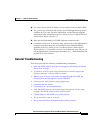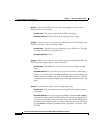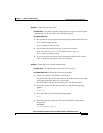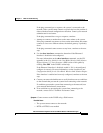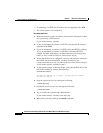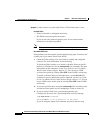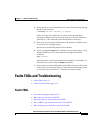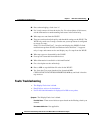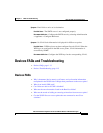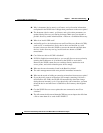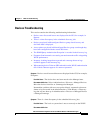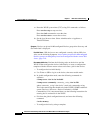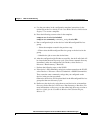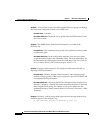
1-11
FAQ and Troubleshooting Guide for the CiscoWorks Wireless LAN Solution Engine
Chapter 1 FAQs and Troubleshooting
Faults FAQs and Troubleshooting
4. Verify that the system can get DNS services from the network by entering
the following command:
# nslookup
dns-name
{
hostname
|
ip-address
}
where dns-name is the DNS name of a host on the network that is
registered in DNS and hostname and ip-address is the same IP address
specified in 2. The command returns the IP address of the host.
5. If the system cannot resolve DNS names to IP addresses, the DNS server
it is using is not working properly.
Resolve the network DNS problem, then continue.
6. If you are using the import CLI command to resolve host names, verify
that the WLSE can resolve host names by entering the following
command:
ping
hostname
where hostname is a host name that has been mapped to an IP address, or
imported in a host file, using the import command.
7. If the system can resolve DNS names to IP addresses but you still cannot
connect to the system using Telnet, or Telnet interaction with the system
is extremely slow, contact Cisco’s Technical Assistance Center.
Faults FAQs and Troubleshooting
• Faults FAQs, page 1-11
• Faults Troubleshooting, page 1-12
Faults FAQs
• Does acknowledging a fault clear it?
• What traps are sent from the WLSE?
• What trap types are forwarded by the WLSE?
• Does a MIB or trap definition file exist for the WLSE?
• What information is emailed in a fault notification?



